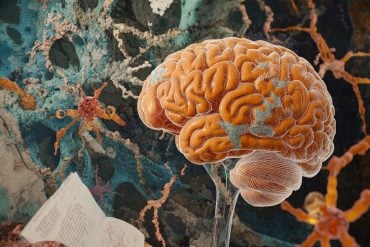Summary: Direct carotid puncture is a safe and effective alternative to thrombectomy for stroke patients.
Source: Yale
Yale researchers have found ways to treat stroke patients that may otherwise be untreatable.
In a study published in the Journal of Neurosurgery, principal investigators Yale’s Charles Matouk, MD, associate professor of neurosurgery, and Nils Petersen, MD, PhD associate professor of neurology, show that a method called direct carotid puncture (DCT) offers a life-saving and surprisingly safe alternative to the standard mechanical thrombectomy for patients with difficult-to-access arteries.
Americans have more than 795,000 strokes every year, leading to 140,000 deaths annually. Treatment options depend on when the stroke patient is brought to the hospital.
During the first four-and-a-half hours after a stroke starts, patients can receive tissue plasminogen activator (tPA), a protein that breaks down blood clots. But after that, it’s too late for tPA, as the risk of bleeding becomes too high. For the most severe subtype of stroke, caused by a blood clot blocking a major artery in the brain, doctors strive to combine tPA with thrombectomy, a procedure where a stent is used to remove the clot causing the stroke. Surgeons get the stent to the brain by threading a catheter through a patient’s artery, usually from the groin. While this works well in many cases, it can be a long and tricky journey.
“As we age, the blood vessels become more twisted, like the knots of a tree, and it becomes more difficult to navigate up to the head,” says Dr. Matouk. For about five to 10 percent of stroke patients, this artery anatomy problem makes mechanical thrombectomies nearly impossible.
“We know that time is brain for the patient,” says Dr. Petersen. “Every minute a stroke goes untreated, 1.9 million neurons die, so immediate treatment is key to saving lives and avoiding disability.”
For their study, Dr. Matouk and Dr. Petersen wanted to see if DCT could be a safe alternative to accessing the brain from the groin. This procedure involves inserting a catheter through a patient’s neck, right into the carotid artery, and then doing a thrombectomy.
DCT would allow doctors to access the clot much more quickly and bypass an abnormal vascular system. But the procedure had long been considered riskier than other routes to doing a thrombectomy. Dr. Matouk’s own positive experiences doing DCT as a rescue approach when other procedures had failed inspired him and Dr. Petersen to take a closer look at the technique.
For the study, the two researchers looked at the attempted thrombectomies at Yale New Haven between 2015 and 2018 to compare those who had the procedure aborted because of the anatomy of their arteries against those who received a DCT-enabled thrombectomy.
The results were promising: surgeons could complete 19 of the 20 DCT procedures they tried to perform. Of this group, 84 percent of the patients (16 people) had clots successfully removed.
Overall, the DCT patients did better than the 17 patients who did not get a thrombectomy, including achieving better scores on the stroke assessment scale set out by the National Institutes of Health.
“Our data are very encouraging,” says Dr. Petersen. “They showed us that not only are we able to use this rescue approach safely, we’re able to get the clot and get the blood vessel open. And it appears people have better outcomes than if you do nothing.”

The team used previous research literature to inform their approach and make adjustments to improve safety, including choosing a puncture site low on the neck, using ultrasound as a guide, and stopping bleeding by applying pressure. These changes have been formalized into the standard workflow for the Yale team.
With more study, DCT could become part of the standard of care for ischemic stroke everywhere, offering more hope for older patients.
“We know the natural course of this disease is just devastating,” says Dr. Petersen. “This approach offers new hope for patients to restore function when they would otherwise inevitably suffer massive, permanent strokes.”
About this stroke research news
Source: Yale
Contact: Jennifer Chen – Yale
Image: The image is in the public domain.
Original Research: Closed access.
“Direct carotid puncture for mechanical thrombectomy in acute ischemic stroke patients with prohibitive vascular access” by Nils Petersen et al. Journal of Neurosurgery.
Abstract
Direct carotid puncture for mechanical thrombectomy in acute ischemic stroke patients with prohibitive vascular access
OBJECTIVE
While the benefit of mechanical thrombectomy (MT) for patients with anterior circulation acute ischemic stroke with large-vessel occlusion (AIS-LVO) has been clearly established, difficult vascular access may make the intervention impossible or unduly prolonged. In this study, the authors evaluated safety as well as radiographic and functional outcomes in stroke patients treated with MT via direct carotid puncture (DCP) for prohibitive vascular access.
METHODS
The authors retrospectively studied patients from their prospective AIS-LVO database who underwent attempted MT between 2015 and 2018. Patients with prohibitive vascular access were divided into two groups: 1) aborted MT (abMT) after failed transfemoral access and 2) attempted MT via DCP. Functional outcome was assessed using the modified Rankin Scale at 3 months. Associations with outcome were analyzed using ordinal logistic regression.
RESULTS
Of 352 consecutive patients with anterior circulation AIS-LVO who underwent attempted MT, 37 patients (10.5%) were deemed to have prohibitive vascular access (mean age [± SD] 82 ± 11 years, mean National Institutes of Health Stroke Scale [NIHSS] score 17 ± 5, with females accounting for 75% of the patients). There were 20 patients in the DCP group and 17 in the abMT group. The two groups were well matched for the known predictors of clinical outcome: age, sex, and admission NIHSS score. Direct carotid access was successfully obtained in 19 of 20 patients. Successful reperfusion (thrombolysis in cerebral infarction score 2b or 3) was achieved in 16 (84%) of 19 patients in the DCP group. Carotid access complications included an inability to catheterize the carotid artery in 1 patient, neck hematomas in 4 patients, non–flow-limiting common carotid artery (CCA) dissections in 2 patients, and a delayed, fatal carotid blowout in 1 patient. The neck hematomas and non–flow-limiting CCA dissections did not require any subsequent interventions and remained clinically silent. Compared with the abMT group, patients in the DCP group had smaller infarct volumes (11 vs 48 ml, p = 0.04), a greater reduction in NIHSS score (−4 vs +2.9, p = 0.03), and better functional outcome (shift analysis for 3-month modified Rankin Scale score: adjusted OR 5.2, 95% CI 1.02–24.5; p = 0.048).
CONCLUSIONS
DCP for emergency MT in patients with anterior circulation AIS-LVO and prohibitive vascular access is safe and effective and is associated with higher recanalization rates, smaller infarct volumes, and improved functional outcome compared with patients with abMT after failed transfemoral access. DCP should be considered in this patient population.






